Lots happening today – a tour of the island of Philae, a quick visit to the Aswan Dam, and a demonstration on how papyrus is still made by hand.
The island of Philae is famous for its temples and its enchantingly beautiful setting on the banks of the River Nile.
Known too as the Pearl of the Nile, it has been a destination of many travelers for centuries. The island is home to several other monuments, most prominent of which is the Great Temple of Isis, who is the main deity of the island. The earliest structures date to the Ptolemaic Period (about 305-30 BCE) and others to the Roman Period (30 BC-306 CE). Due to the construction of the Aswan Dam, the island would be submerged and a major effort was made to relocate the temple and all the surrounding structures to a new location. Agilkia Island – a short distance away, proved to be a good spot and work was done to relocate the entire complex.
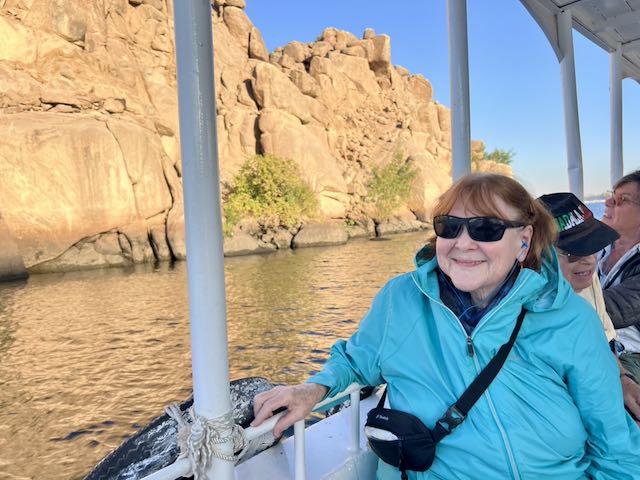
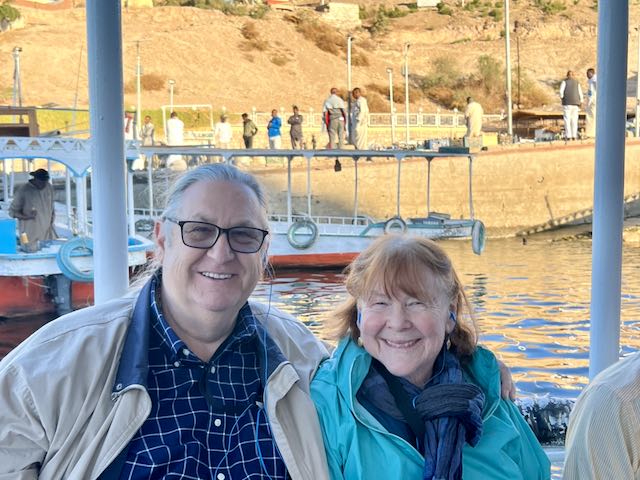
As it is an island, a short boat trip was required to get there. As with other excursions, it was an early departure and we were some of the very first visitors of the day, to the site. Of course, immediately upon landing on the island there was the now very common site of souvenirs available for sale. I really want to find out who is the lead guy for all of this stuff – as it’s the same items at every location; so someone must be responsible for organizing all of these vendors given that it’s the same stuff everywhere!
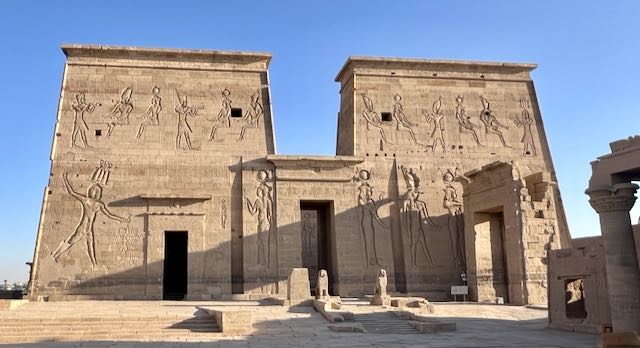
This elegant structure, which lies east of the Great Temple of Isis, is the most iconic of the Philae monuments. It is a rectangular structure consisting of fourteen columns connected by screen walls and architraves. It is thought to have been built early in the reign of Augustus (30 BCE-CE 14), the first Roman emperor.
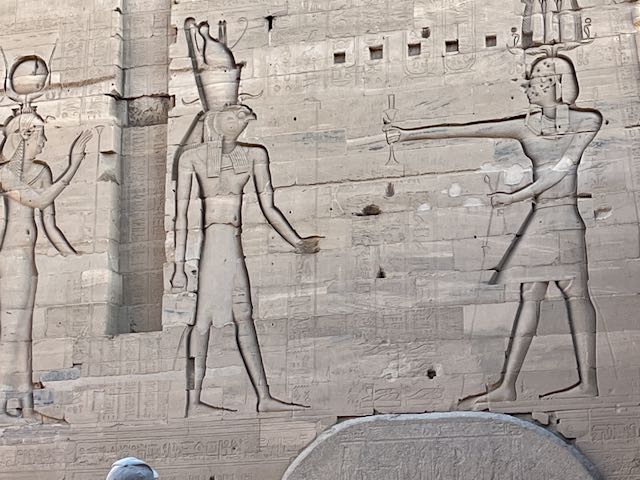
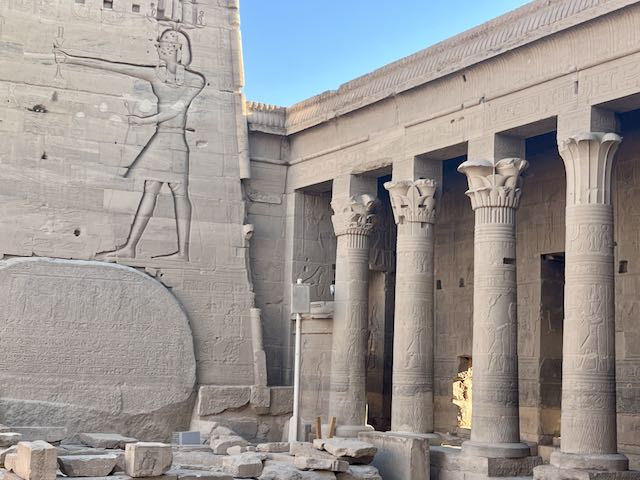
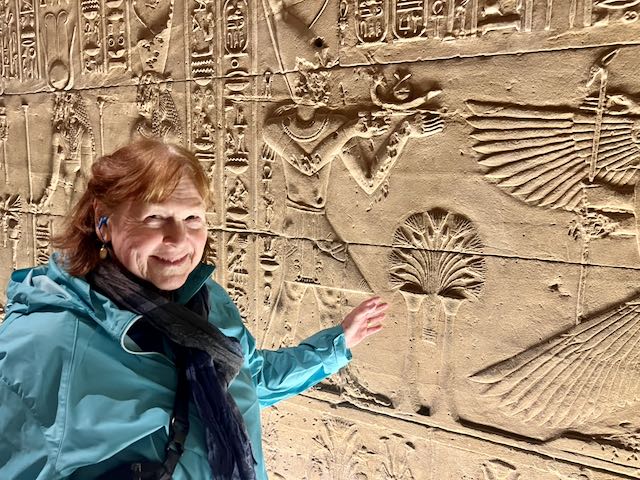
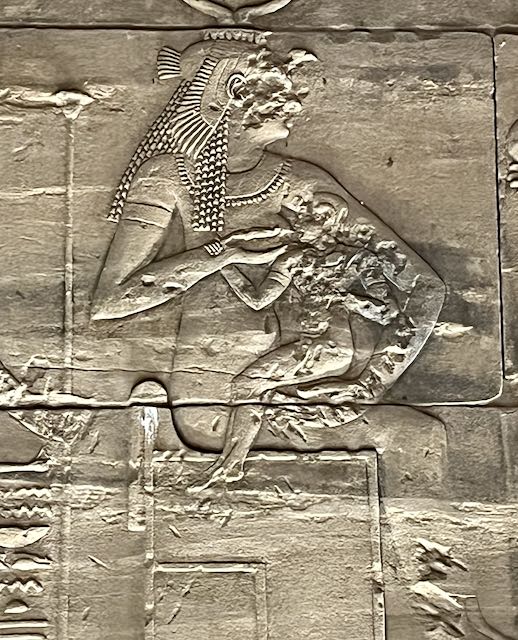
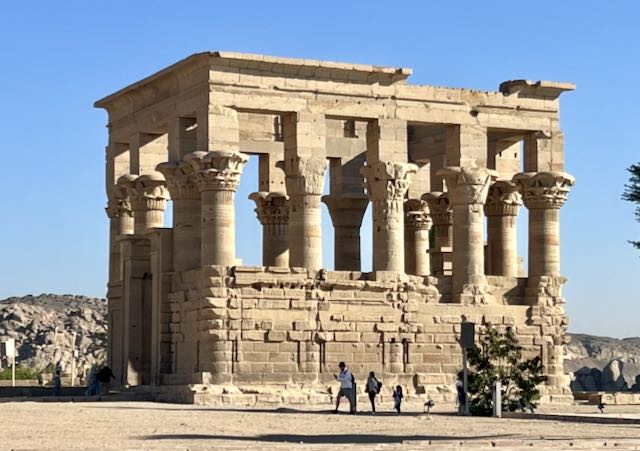
Trajan’s Kiosk, also known as Pharaoh’s Bed by the locals, is a hypaethral temple (having a roofless central space) temple located on the Island. The unfinished monument is attributed to Trajan, Roman emperor from 98 to 117 CE, due to his depiction as pharaoh seen on some of the interior reliefs. However, the majority of the structure dates to an earlier time, possibly to the reign of Augustus.
Within the Trajan’s structure are carvings depicting a variety of Egyptian musical instruments.
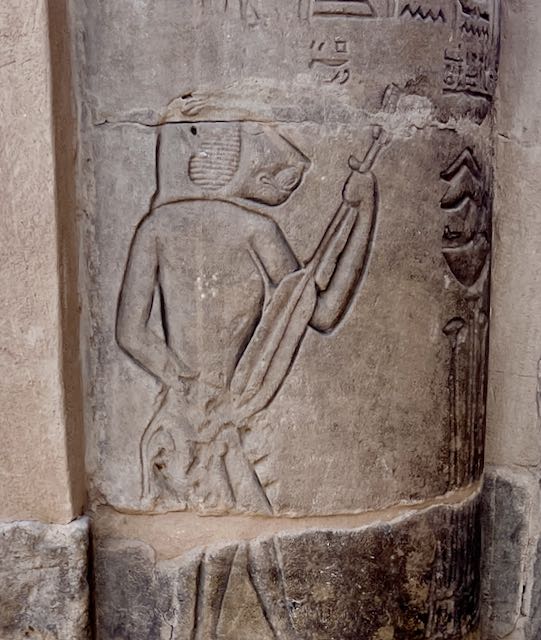
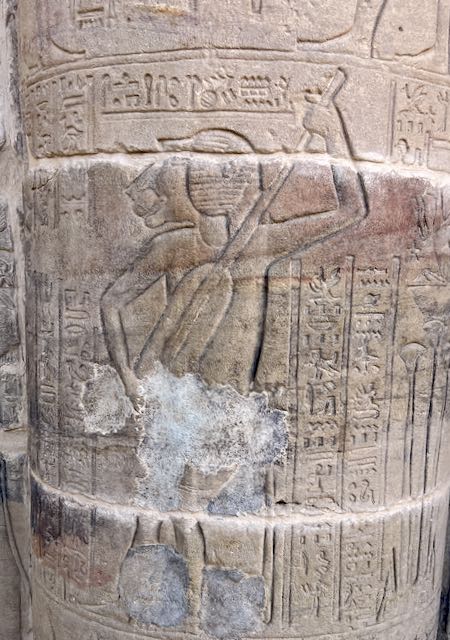
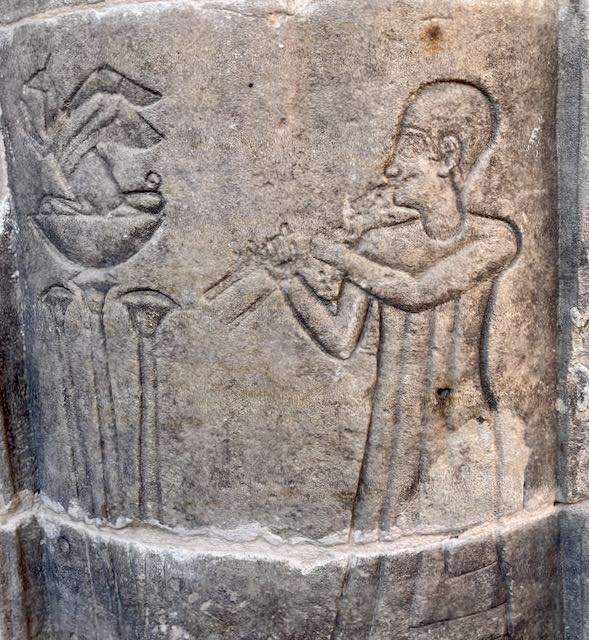
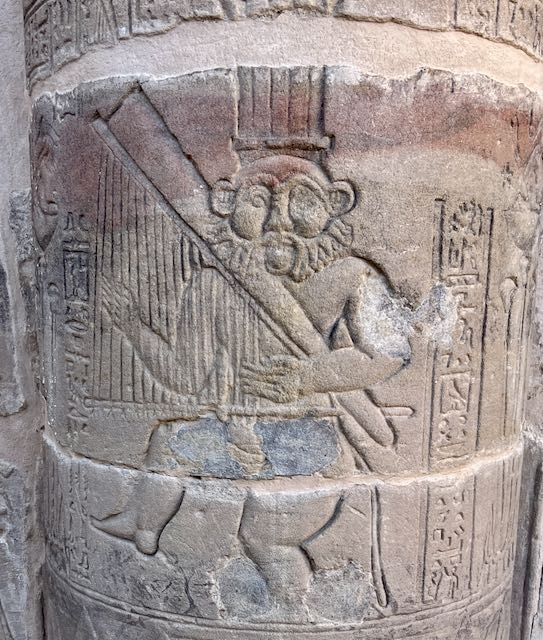
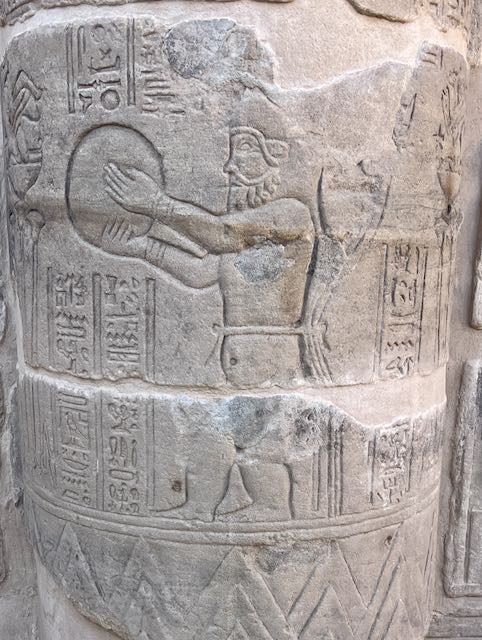
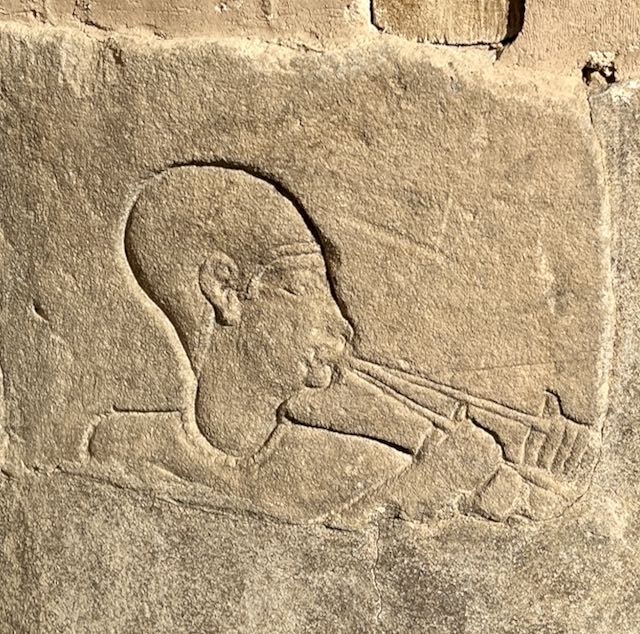

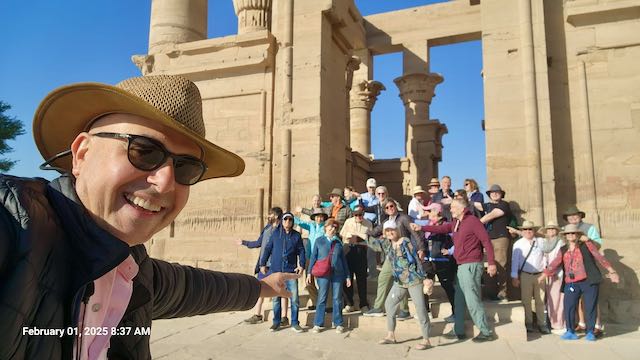
Assum took a selfie with our group at the Temple.
Back to the coach and off to the Aswan Dam. The Aswan Dam, or Aswan High Dam, is one of the world’s largest embankment dams, which was built across the Nile in Aswan between 1960 and 1970. When it was completed, it was the tallest earthen dam in the world. The dam also generates enormous amounts of electric power — more than 10 billion kilowatt-hours every year.
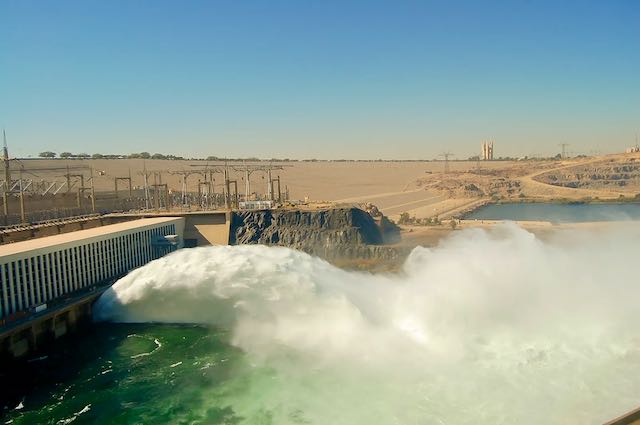
That’s enough electricity to power one million color televisions for 20 years! While the dam now controls the Nile River, there are a number of unforeseen consequences; most importantly that the annual flooding would deposit silt and enriched the soil all along the river bank which is no longer happening. As a result, there is an increased use of chemicals to support farming.
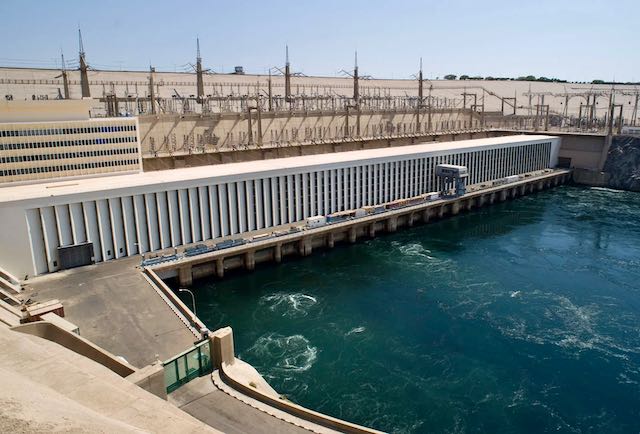
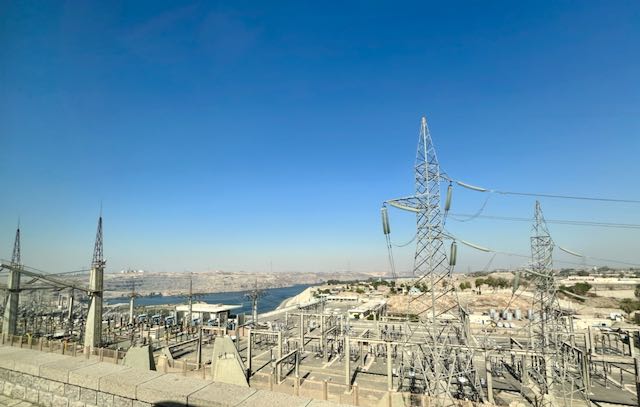
Additionally, a number of historic sites were raised to higher ground while others were left in place as funds were not available to relocate them. New York Metropolitan Museum has one of the relocated temples (Temple of Dendur).
Papyrus was first manufactured in Egypt as far back as the third millennium BCE. The earliest archaeological evidence of papyrus was excavated in 2012 and 2013 at Wadi al-Jarf, an ancient Egyptian harbor located on the Red Sea coast. These documents, the Diary of Merer, date from c. 2560–2550 BCE (end of the reign of Khufu). The papyrus rolls describe the last years of building the Great Pyramid of Giza. Our stop today was at the Al Sondos Papyrus shop. This place has been around for the last 20 plus years and makes papyrus in the traditional way and has a number of artists who create paintings on the material.
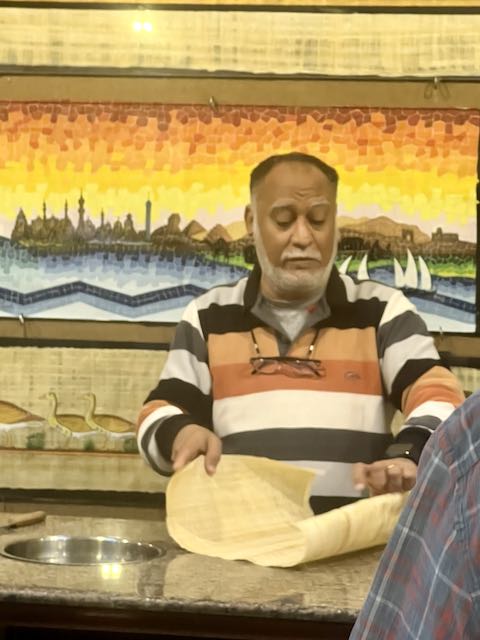
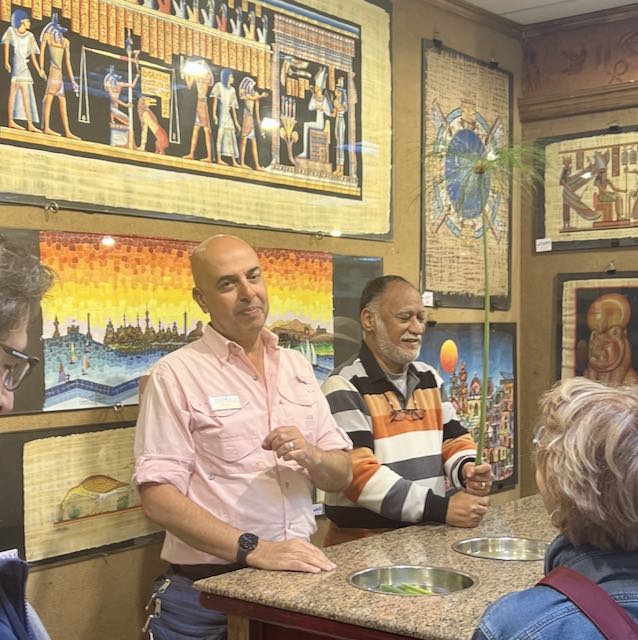
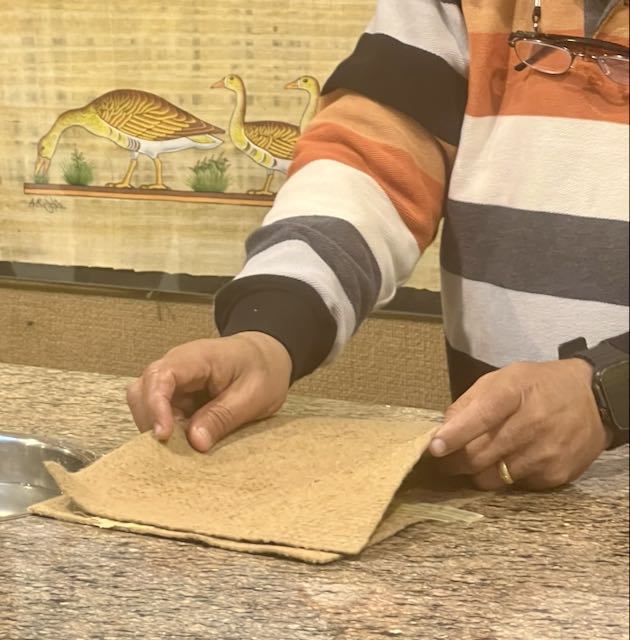
While we were there, we had a demonstration of how the papyrus was made and got to view a lot of different works of art on the walls.
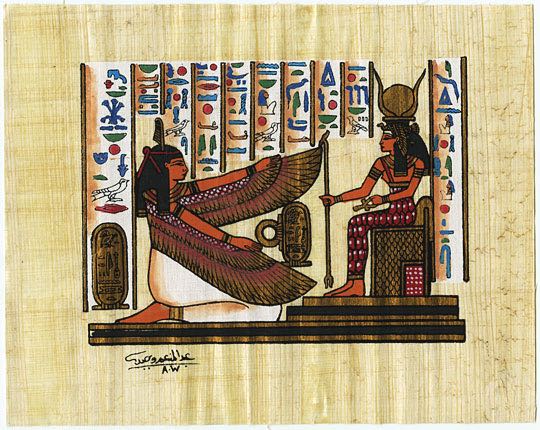
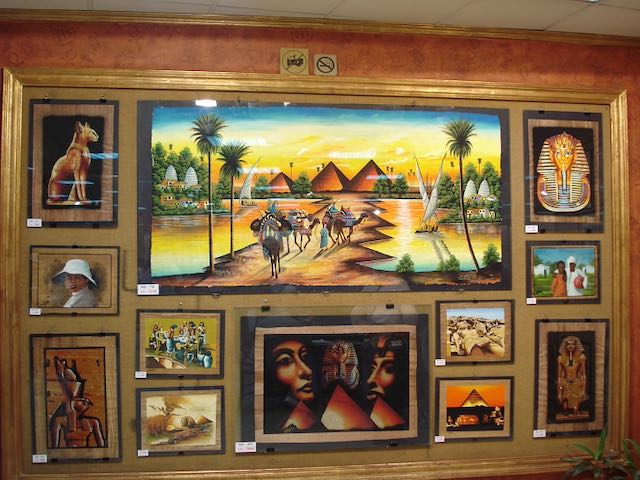
We ended up purchasing two – one each for our granddaughters. Each depicts their zodiac sign and has their name written in hieroglyphs. Very special indeed.
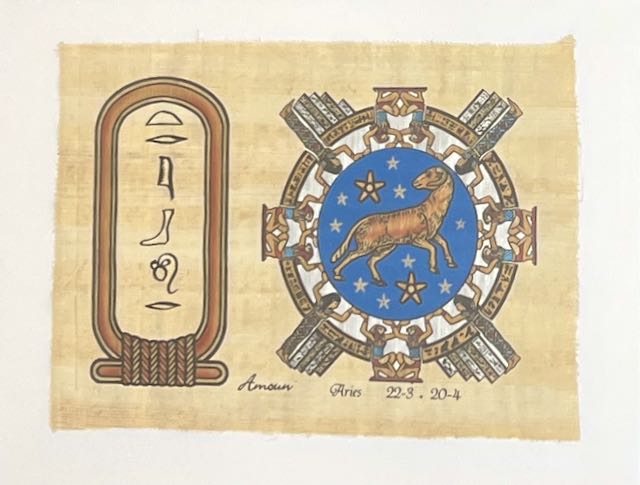
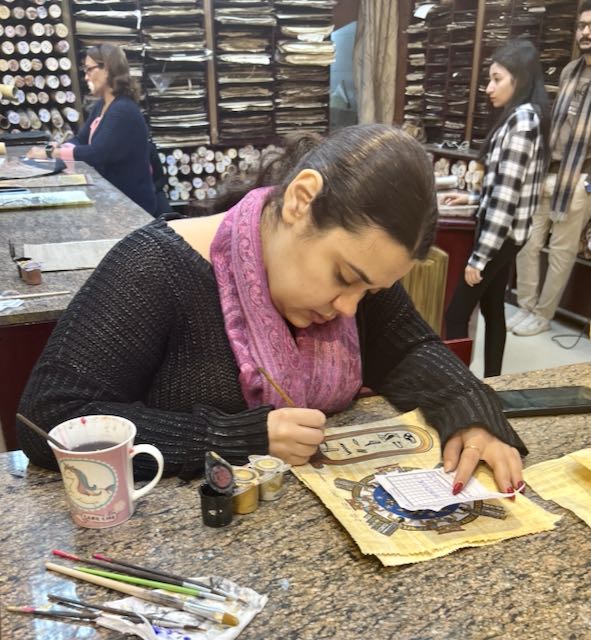
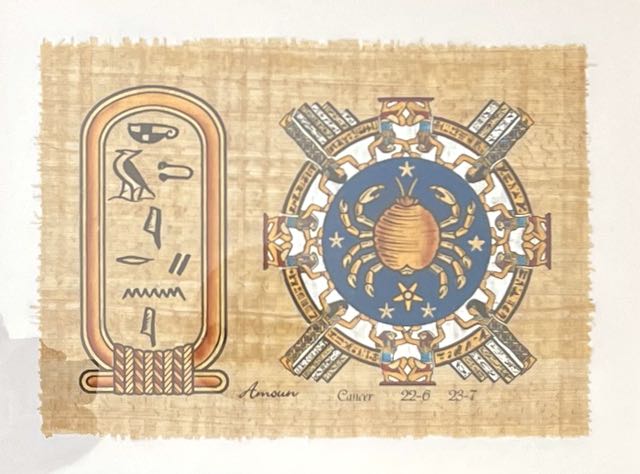
Each was hand lettered with our granddaughters name! Can you figure out their names from the chart below?
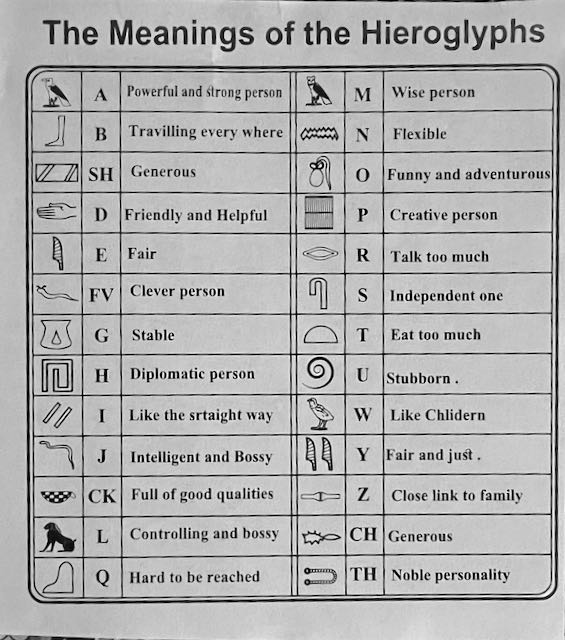
Back on the ship, I wandered into the lounge and discovered a lovely collection of hand-crafted items.
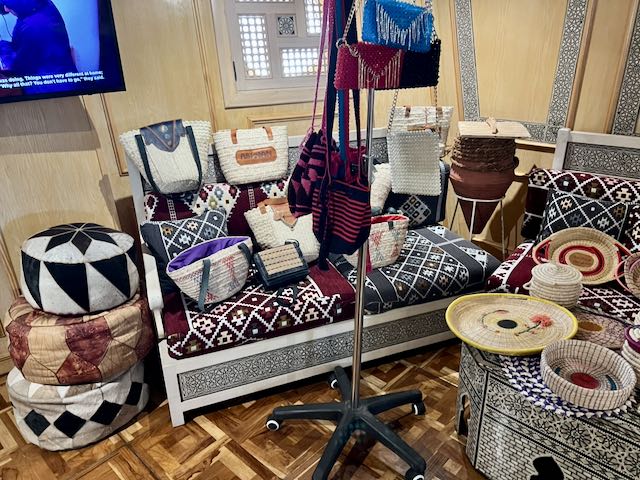
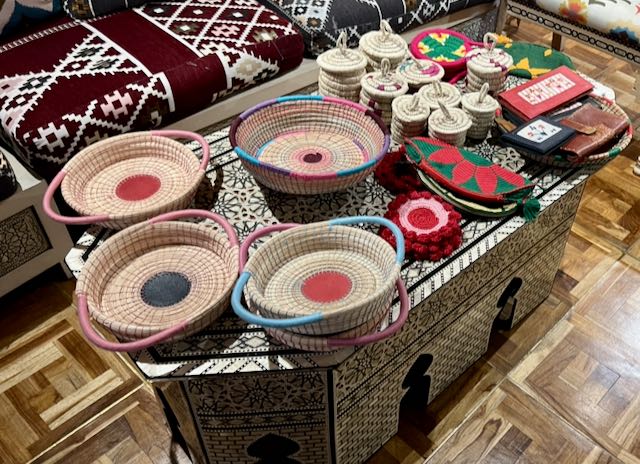
These items were all done by the Cooperative Women Productive Association. The Cooperative is a success story that has transformed the lives of its members, who had been finding it hard to obtain employment. They are focused on creating their own enterprise. In Egypt, there is no welfare system so people have to work to make a living. For women who are disabled, or handicapped, or who have lost their job, or are widows they have limited opportunities.
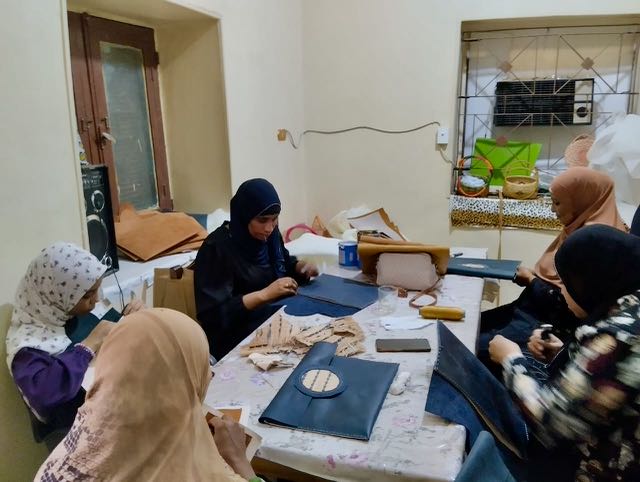
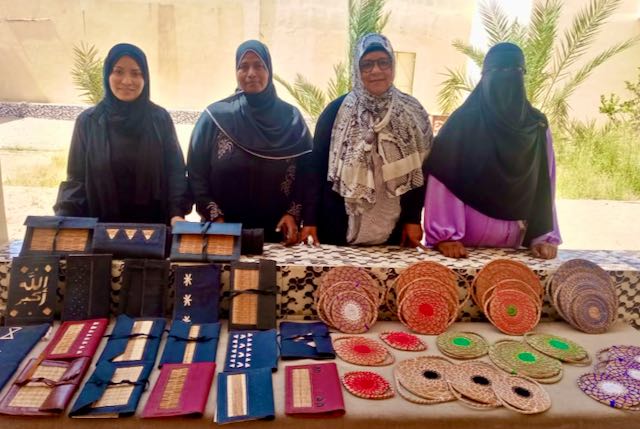
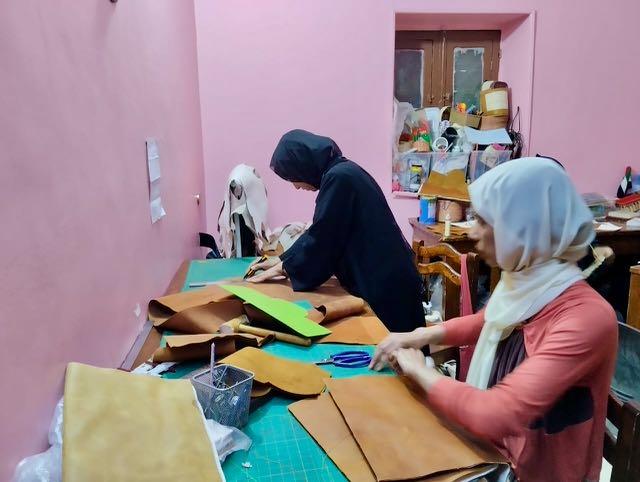
Started in 2018, the Cooperative Women Productive Association has been able to improve the lives of its members and offer new options to lots of women. These hand-crafted items were representative of the kinds of items they make and are offered for sale on the ship. Of course, donations were also accepted.
It had been a full day with lots to experience and enjoy.
Did your guide point out the floating coffins or maybe they were flooded by the reservoir behind the Aswan Dam….? We went to a papyrus shop, too 🙂
Grateful again and again for your photos (visual learner) as we walk, float and tour through your beautifully written travel blog. Loved the brief background on the Nile, the Trajam structure drawings and A+ on the wonderful photo of J pointing to the bouquet.
Thank you both for the Egypt photos and commentary and memories! Every episode brings back memories of the adventure that Elaine and I enjoyed several years ago in the land of Pharos and Papyrus! !!